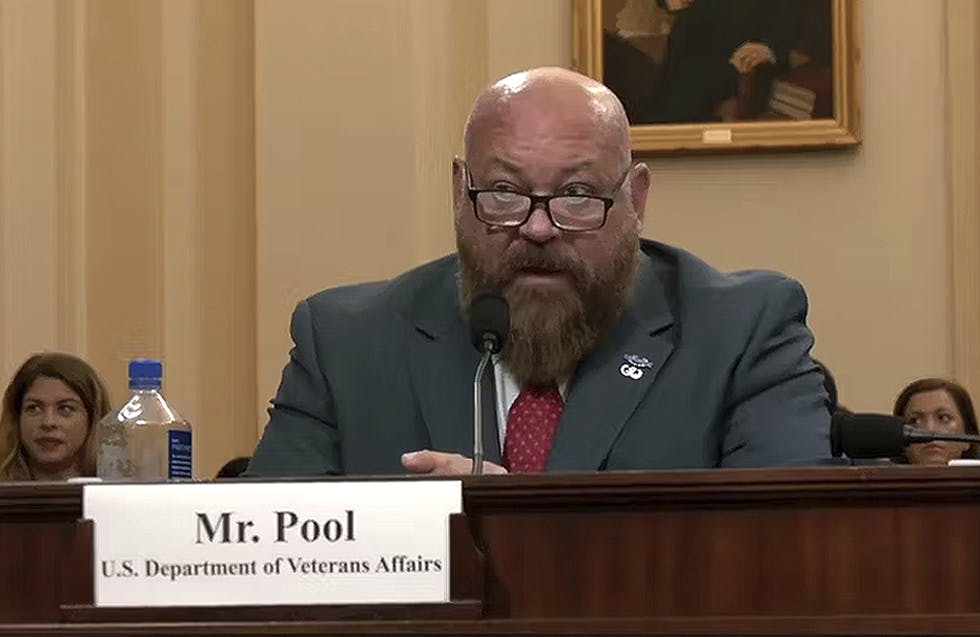Micky Tripathi: ASTP Getting a New Digital Service
Newly reorganized ONC is gearing up to tackle new priorities in AI policy and services with new personnel and divisions.

Department of Health and Human Services’ newly reorganized policy arm is getting a new digital service division to provide digital and technical expertise across its various operating and staff divisions, Assistant Secretary for Technology Policy/National Coordinator for Health IT Micky Tripathi said Thursday at the Health IT Summit in Rockville, Maryland.
“We will have teams that will provide digital services and technical assistance to all of our operating and staffing divisions so that they don’t have to worry about going out and hiring teams for that kind of expertise,” said Tripathi, who will oversee the division. “They will be on demand and will help with consulting and the enablement of technologies.”
As part of the realignment of the Office of the National Coordinator for Health IT (ONC), Tripathi now oversees a division that comprises the CTO, who then oversees the chief AI Officer and the CDO. This reorganization reflects a shift in how HHS approaches technology in areas such as product development, data strategy and AI across the entire agency.
Strategic Focus on AI and Policy
The department has increasingly focused on AI, particularly in the wake of advancements like generative AI and recent federal executive orders that emphasize responsible AI development and governance.
Tripathi, who also serves as acting chief AI officer, said the role will be focused on several priorities including standardizing the use of AI and creating new policies around how to treat across the public health sector.
“We want to have uniform policies about things like the uses of gen AI in peer review processes, for example,” he said. “If one operating division like NIH has a policy on that, we want to make sure that that’s consistent across the entire department.”
Tripathi noted that prior to the reorganization, only three people at HHS were focused on AI — two of whom had joined shortly before the restructuring. Now, AI policy and implementation have become central to the department’s broader technology strategy.
“It was already an underfunded activity. … We need to be able to consolidate more of these resources, make the most efficient use of the staff that we have, but we need more resources to be able to do this,” he said.
Supporting Agency Missions
HHS, one of the largest federal departments, encompasses a vast array of responsibilities, including health care delivery. Tripathi highlighted that the department is not just a regulator, but also a health care provider through agencies like the Indian Health Service.
Coordinating technology initiatives across such a diverse range of missions is challenging.
“The department is more than the sum of its parts, and so as we have more and more investments in technology, information technology and in AI, we want to make sure that we’re getting the synergy across those agencies,” he said.
Tripathi cited ever-evolving policies including U.S. Core Data for Interoperability (USCDI) and TEFCA as some of the key ways the agency can scale AI.
“Everything that we’re doing with respect to USCDI and TEFCA is enriching that fertile field of data,” he said. “We want these AI tools to draw on that data to be able to provide a richer set of services to benefit patients.”
This is a carousel with manually rotating slides. Use Next and Previous buttons to navigate or jump to a slide with the slide dots
-

VA CIO Targets Modern IT and Smarter Workforce Alignment
Agency leaders told lawmakers they are focused on trimming legacy systems and restructuring its workforce to streamline operations.
3m read -

Pentagon's $200M AI Contracts Signal Broader Effort to Transform Talent
The Army is leveraging Silicon Valley, reservist programs and new hiring strategies to integrate critical digital skills in its ranks.
5m read -

AI Foundations Driving Government Efficiency
Federal agencies are modernizing systems, managing risk and building trust to scale responsible AI and drive government efficiency.
43m watch -

Agencies Tackle Infrastructure Challenges to Drive AI Adoption
Federal agencies are rethinking data strategies and IT modernization to drive mission impact and operational efficiency as new presidential directives guide next steps.
5m read Partner Content -

Generative AI Demands Federal Workforce Readiness, Officials Say
NASA and DOI outline new generative AI use cases and stress that successful AI adoption depends on strong change management.
6m read -

The Next AI Wave Requires Stronger Cyber Defenses, Data Management
IT officials warn of new vulnerabilities posed by AI as agencies continue to leverage the tech to boost operational efficiency.
5m read -

Federal CIOs Push for ROI-Focused Modernization to Advance Mission Goals
CIOs focus on return on investment, data governance and application modernization to drive mission outcomes as agencies adopt new tech tools.
4m read -

Fed Efficiency Drive Includes Code-Sharing Law, Metahumans
By reusing existing code instead of rewriting it, agencies could dramatically cut costs under the soon-to-be-enacted SHARE IT Act.
5m read -

Agencies Push Data-Driven Acquisition Reforms to Boost Efficiency
New initiatives aim to increase visibility of agency spending, improve data quality and create avenues to deploy solutions across government.
5m read -

Data Transparency Essential to Government Reform, Rep. Sessions Says
Co-Chair of the Congressional DOGE Caucus Rep. Pete Sessions calls for data sharing and partnerships to reduce waste and improve efficiency.
5m read -

Trump Executive Order Boosts HBCUs Role in Building Federal Tech Workforce
The executive order empowers HBCUs to develop tech talent pipelines and expand access to federal workforce opportunities.
3m read -

Navy Memo Maps Tech Priorities for the Future Fight
Acting CTO’s memo outlines critical investment areas, from AI and quantum to cyber and space, as part of an accelerated modernization push.
5m read

















